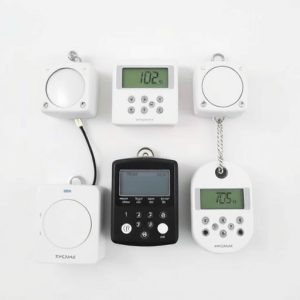Silent Wearable Alarms: Lifesaving Discreet Communication with Long Reach
Wearable emergency devices are transforming personal safety with discreet, powerful tools that emit…….
Wearable emergency devices are transforming personal safety with discreet, powerful tools that emit specific panic alarm sounds with defined carry distances for silent alerts from safe distances. This technology is invaluable in scenarios like domestic violence or remote outdoor areas where loud alarms could be inappropriate or dangerous. By utilizing vibrations or subtle beeps, these devices save lives and provide peace of mind, ensuring optimal carry distance and battery life while navigating weather conditions and environmental noise levels.
Wearable emergency devices are revolutionizing personal safety, offering a discreet and effective solution for unexpected situations. This article explores the innovative technology behind these lifesaving tools, focusing on silent alerts that guarantee privacy while ensuring urgent communication. We delve into designing for optimal carry distance, addressing key concerns to make these devices accessible and reliable in critical moments, such as when a panic alarm sound might be your only means of help.
- Understanding Wearable Emergency Devices: A Lifesaving Innovation
- The Science Behind Silent Alerts: Ensuring Discreet Communication
- Designing for Optimal Carry Distance: Addressing Key Concerns
Understanding Wearable Emergency Devices: A Lifesaving Innovation
Wearable emergency devices are a game-changer in personal safety, offering a discreet yet powerful way to seek help during critical situations. These innovative tools allow individuals to trigger silent alerts for assistance, ensuring their well-being without drawing unnecessary attention. The key feature lies in their ability to emit a unique panic alarm sound with a specific carry distance, enabling users to signal for help from a safe distance.
This technology is particularly valuable in scenarios where loud alarms might be inappropriate or could provoke dangerous situations. For instance, victims of domestic violence or those in remote outdoor areas can discretely activate these devices to send distress signals. By utilizing silent alerts and specific sound patterns, wearable emergency devices provide a discreet yet effective means of communication, potentially saving lives and offering peace of mind.
The Science Behind Silent Alerts: Ensuring Discreet Communication
The Science Behind Silent Alerts: Ensuring Discreet Communication
Wearable emergency devices rely on silent alerts to discreetly convey danger or distress without drawing unnecessary attention. Unlike traditional panic alarms that emit loud sounds, these devices utilize advanced technology to transmit signals through vibration or subtle beeps, ensuring the user’s safety remains hidden. The choice of signal type and carry distance is pivotal; vibrations, for instance, can effectively alert wearers without alerting potential hazards, making them ideal for discreet use in public spaces.
These silent alerts are designed to provide a subtle yet powerful means of communication, allowing users to summon help quickly without compromising their privacy or safety. The technology behind these devices has evolved significantly, employing low-power Bluetooth or other wireless signals that can be detected by emergency services while maintaining the wearer’s anonymity, making them indispensable tools for personal safety in today’s dynamic world.
Designing for Optimal Carry Distance: Addressing Key Concerns
When designing wearable emergency devices, one of the critical considerations is ensuring they can be easily carried and accessed during an emergency. The carry distance a user is comfortable maintaining their device within should be a key design factor. This is especially true for devices that rely on silent alerts, such as subtle vibrations or unique light patterns, to signal distress without drawing attention.
Addressing concerns around panic alarm sound intensity and duration while also optimizing battery life can be challenging. Developers must balance the need for loud, piercing sounds to startle and alert users with the reality of prolonged use. Too loud, and it risks causing unnecessary panic or even hearing damage; too quiet, and it may not effectively deter a would-be attacker or attract help. Additionally, weather conditions and environmental noise levels can impact the device’s audibility, further emphasizing the importance of designing for an optimal carry distance where users are most likely to respond quickly and accurately to silent alerts.
Wearable emergency devices with silent alerts represent a significant advancement in personal safety, offering discreet yet powerful tools for those in need. By addressing key concerns like carry distance and leveraging innovative science behind silent communication, these devices provide peace of mind in various situations. As we continue to explore new frontiers in personal safety technology, the role of wearable emergencies becomes increasingly vital, ensuring that help is never far away when it matters most.


